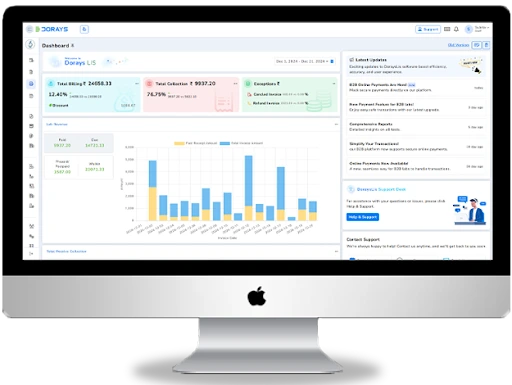
Lipid Profile Report Format
What is a Lipid Profile Test?
A Lipid Profile Test evaluates the level of Cholesterol, Triglycerides and other types of fats present in the blood. This test assists in diagnosing cardio vascular disorders which include heart disease, stroke, and atherosclerosis. Basis the profiles received, the physician suggests necessary interventions for treatment or lifestyle changes.
What is a Lipid Profile Report Format?
A Lipid Profile Report lists the type of lipids present in the blood of a person along with the doses of each of them. This report serves to assess a patient’s condition of cardio vascular health and also assists in diagnosing hyperlipidemia. This report usually enables the effective management of lowering heart disease or stroke risks. This report incorporates the various ranges of different doses of cholesterol, triglycerides and lipid profile markers.
This test is carried out for assessing the cardiovascular risks a patient might be exposed to along with routine health screening engagement.
Tests Included in Lipid Profile Report
Test | Description |
Total Cholesterol | Measures the total amount of cholesterol in the blood, including both "good" and "bad" cholesterol. High levels can increase the risk of heart disease. |
High-Density Lipoprotein (HDL) | Known as “good cholesterol,” it helps remove excess cholesterol from the blood vessels and reduce the risk of heart disease. |
Low-Density Lipoprotein (LDL) | Known as “bad cholesterol,” high levels of LDL can lead to plaque buildup in the arteries, increasing the risk of heart disease and stroke. |
Triglycerides | Measures the amount of fat in the blood. Elevated triglycerides can increase the risk of heart disease. |
VLDL (Very-Low-Density Lipoprotein) | A type of lipoprotein that carries triglycerides in the blood, and high levels can contribute to heart disease. |
Non-HDL Cholesterol | Total cholesterol minus HDL cholesterol, used as an additional risk marker for cardiovascular disease. |
Key Parts of a Lipid Profile Report
- Total Cholesterol: The sum of LDL, HDL, and 20% of the triglyceride level. High total cholesterol increases the risk of cardiovascular diseases.
- HDL Cholesterol: The "good" cholesterol that helps prevent plaque buildup in the arteries. Higher levels are protective against heart disease.
- LDL Cholesterol: The "bad" cholesterol, where higher levels can lead to atherosclerosis (plaque buildup in the arteries), increasing the risk for heart attacks and strokes.
- Triglycerides: The type of fat in the blood. Elevated levels are linked to increased risk for heart disease, especially when combined with low HDL levels.
- VLDL: A type of lipoprotein similar to LDL, responsible for transporting triglycerides. High levels may increase the risk of heart disease.
- Non-HDL Cholesterol: The total cholesterol minus HDL, serving as an additional indicator of atherosclerotic risk.
Normal Ranges for a Lipid Profile Report
Test | Normal Range |
Total Cholesterol | < 200 mg/dL |
HDL Cholesterol | Men: > 40 mg/dL, Women: > 50 mg/dL |
LDL Cholesterol | < 100 mg/dL (optimal) |
Triglycerides | < 150 mg/dL |
VLDL Cholesterol | 5-40 mg/dL |
Non-HDL Cholesterol | < 130 mg/dL |
Parameters to Consider in a Lipid Profile Report
Parameter | Interpretation |
Total Cholesterol | High levels (≥ 240 mg/dL) may indicate an increased risk of heart disease. |
HDL Cholesterol | Low levels (≤ 40 mg/dL in men, ≤ 50 mg/dL in women) increase the risk of heart disease. Higher levels (≥ 60 mg/dL) are protective. |
LDL Cholesterol | Elevated levels (≥ 160 mg/dL) increase the risk of atherosclerosis, heart disease, and stroke. |
Triglycerides | Elevated triglyceride levels (≥ 200 mg/dL) can increase the risk of heart disease, particularly when paired with high LDL or low HDL. |
VLDL Cholesterol | Higher VLDL levels indicate an increased risk for cardiovascular diseases. |
Non-HDL Cholesterol | Elevated non-HDL cholesterol is associated with a higher risk for cardiovascular disease, even when LDL is normal. |
Guidelines for Lipid Profile Report Format
- Total Scores: Present the numerical values for each lipid measurement (e.g., Total Cholesterol, HDL, LDL, Triglycerides).
- Results Reference: Provide reference ranges for each lipid component to easily compare abnormal values.
- Interpretation/Comments: Offer insights into the significance of the test results, such as risk assessment for cardiovascular diseases and recommended actions.
- Patient Information: Include details about the patient's age, gender, medical history, medications, and risk factors for heart disease (e.g., hypertension, diabetes).
- Date & Chronology: Record the date the test was performed to track changes over time.
What Do the Results Mean?
Lipid profile results assist in evaluating the risks and diagnosing the cardiovascular diseases, correcting any lipid disorders, and managing hyperlipidemia. This is what the results may suggest:
- High Total Cholesterol: Can indicate an increased risk of heart disease and stroke, especially when associated with high LDL levels or low HDL levels.
- Low HDL Cholesterol: Increases the risk of heart disease. Higher HDL is beneficial as it helps remove excess cholesterol from the bloodstream.
- High LDL Cholesterol: A major contributor to plaque buildup in the arteries, which can lead to atherosclerosis, heart disease, and stroke.
- High Triglycerides: Associated with obesity, diabetes, and metabolic syndrome. Elevated triglycerides can increase the risk of heart disease.
- High VLDL Cholesterol: Elevated VLDL levels are linked to a higher risk of heart disease and other cardiovascular conditions.
- High Non-HDL Cholesterol: An indicator of higher risk for cardiovascular diseases, regardless of LDL levels.
Lipid Profile Report Interpretation
Test | Interpretation |
Total Cholesterol | High levels (> 240 mg/dL) suggest an increased risk for heart disease. |
HDL Cholesterol | Low HDL levels (< 40 mg/dL for men, < 50 mg/dL for women) increase heart disease risk. |
LDL Cholesterol | High LDL levels (> 160 mg/dL) contribute to plaque buildup in arteries. |
Triglycerides | Elevated levels (> 200 mg/dL) increase the risk of heart disease. |
VLDL Cholesterol | Elevated VLDL indicates a higher risk of cardiovascular diseases. |
Non-HDL Cholesterol | High non-HDL cholesterol is a strong predictor of heart disease risk. |
This format provides a comprehensive structure for the Lipid Profile Report, helping doctors assess the patient's cardiovascular risk based on their lipid levels. Let me know if you need any further details or modifications!

Effortless Lab Management Starts Here!
Experience the future of lab operations. One click to revolutionize your lab.


